Jane Friedman's Blog: Jane Friedman, page 154
January 30, 2015
The Strategic Use of Book Giveaways and How They Can Increase Earnings Potential

by Patrick Goethe
Over the last few months, I’ve observed a lot of chatter regarding the use of giveaways, especially for indie author book marketing and promotion. A summary of the most recent conversation can be found over at Porter Anderson’s post, ‘Who Decided Our Worth?’ Do Free Books Give Away Authors’ Value?
So, do free books hurt authors (or publishers, for that matter)? The short answer is no. For the long answer, keep reading.
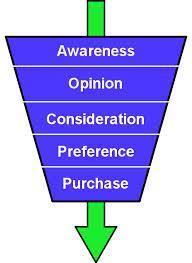 What’s Your Funnel?
What’s Your Funnel?This is the key question that every strategic author needs to ask. The funnel is the path that readers take from becoming aware of you to becoming a fan.
Giveaways (or freebies) are popular for good reason; they’re a classic, frictionless way to make people aware of your work. Just about every industry has some way of using “free” to their advantage, particularly game, software, and app developers. If you can get a sufficient number of people in the door, and they like your stuff, you can sell them other things once you have some kind of trust or relationship in place.
If you’ve seen the famous Alec Baldwin speech in Glengarry Glen Ross—it’s a favorite of mine—it’s the same idea being expressed. A-I-D-A. First, get people’s attention—whether through an ad, a freebie, traditional media coverage, whatever. That creates interest. And if all goes well, you have desire and action to make a purchase later.
I don’t find it useful to discuss (or demonize) giveaways in the abstract, because unless we can tie it to a particular strategy for a particular author at a particular time, it’s impossible to evaluate it properly. If the giveaway leads to paying fans down the road, it’s smart. If the giveaway leads to no further action, then it should be reconsidered.
I don’t believe that one giveaway leads to an expectation that all of an author’s books will be free. When we get a free cheese cube at the grocery store, we don’t expect to carry away the whole cheese without paying. When we consider ourselves fans of an author, we might expect promotional pricing for buying early, and of course fair pricing in general, but not free stuff forever.
If there is a broader problem with giveaways specifically in the indie author community, it might be that you’re possibly cultivating readers who don’t give a damn about you and are only out for the cheapest read. In other words: giveaways can attract low-quality readers. But they attract high-quality readers, too. This is how business works. Some leads will be good. Other leads will be bad. Business savvy authors learn over time how and where to use the giveaway incentive to increase the high-quality leads and reduce the low-quality leads.
What’s Your Demand Curve?
When I recently interviewed Richard Nash, we discussed how every author has a demand curve. Here’s what he said:
Certain activities you engage in, you may do for free, and certain activities you engage in are going to be very, very expensive. It’s free to walk into the Prada store at Broadway and Prince, but it is extremely expensive to buy a dress. It is less expensive to buy cufflinks or a blouse. It tends to be that most people who go in there buy nothing—which is also true of the Apple store.
Take the novelist and poet Jim Harrison. … I know Grove is always trying to figure out, “How are we going to sell more Jim Harrison copies?” And the answer is: it is really f—g hard to bend a demand curve for somebody who’s been in the culture for thirty years. [You can’t expect] some deus ex machina to descend [and move] the point along the demand curve for Jim Harrison-ness—where there are 20,000 people who want to engage for $15—to where there are suddenly 40,000 people who want to engage.
But the thing is, there are all kinds of other places on the demand curve that are completely underutilized. So in the case of Harrison, I remember several years ago Googling him, and the second entry was a Wine Spectator article, which I read and I discovered that he is an epic gourmand. He has arranged these four-day bacchanalian orgies of food and wine in Florida in the winter with a bunch of food cronies.
If Jim Harrison picked a bottle of wine for you to drink while reading the beginning of his next book, you could get one of those wooden unvarnished boxes, stick the signed hardcover of the book and a little explanatory note from Jim in there, and sell each one of them for three hundred dollars, easy.
You can also have a 99-cent download, and you’re going to get more people to read him. Are you going to cannibalize a little bit of paperback sale? I don’t think so at all, actually. Even if [you do], from a revenue standpoint and from a readership standpoint, both numbers have gone way up.
I’ve been trying to advocate for this with publishers for years, but basically they just don’t seem able to handle it—not at scale. On an ad-hoc basis, you’ll see a few publishers trying a few things.
Fortunately, where publishers mostly fail, indie authors can excel. (And startups and online-based entrepreneurs have figured this all out, by the way.)
The giveaway is one of the more powerful tools in the new author’s arsenal because it’s a way to get attention when you may not have anything else going for you. There is no demand curve for you yet. And especially if you have no publisher backing you, then it’s important to provide social proof to potential readers, or have some way of indicating merit before they’ll invest time or money. (Thus the race for reviews, social media presences, etc—anything that indicates your work deserves attention.)
But should established authors do giveaways? The “permafree” strategy is well-documented as an effective marketing tool—which means you make the first book in a series permanently available for free, as a gateway drug to the rest of your work.
Where I think indie authors run into trouble is when they only have 1 or 2 books to sell, and they have nothing else to offer readers—and even worse, they don’t establish any means to contact the reader in the future (via e-mail newsletter or social media). So there is no funnel or path for readers to follow. It is a dead-end road. The potential fan finishes the book, and then … you lose them. Maybe they’ll find your next book, if and when it comes, maybe not.
The other catch here is that your work has to have quality that matches the expectations of your audience. If it doesn’t, no amount of giveaways help. When the cheese tastes bad, you stop taking the samples.
What About Traditional Publishers?
As Nash points out, some are better than others in thinking more strategically about an author’s demand curve. They occasionally use the power of the giveaway, but more often they use the power of deep discounting. (Some have started their own versions of BookBub!) I do recall one notable experiment when Suze Orman’s newest book was given away in PDF format, right before its official release, in conjunction with an appearance and announcement on Oprah. The next week, the print edition hit the bestseller lists.
Also, while I was at Digital Book World, subscription services were discussed as a way to increase discoverability for authors’ backlist, and to get new attention for old books—an opportunity to build a pipeline of fans.
Better Than Free
Giveaways can be an effective part of a larger content and marketing strategy. Don’t use them without considering your funnel, as well as your demand curve. If you have fans who value your work, they aren’t seeking everything for free—and in fact once you have a fanbase, they’ll be looking for experiences that are much better than a free book. Kevin Kelly commented at length about all the ways you can deliver something that makes it a delight for people to hand over their money.
Rather than pointing the finger at a community that you believe doesn’t value your hard work, ask yourself why what you’re offering doesn’t seem worth paying for. People don’t pay more for something because of a rational explanation (or an abstract complaint that culture costs money). They pay for something because they believe in it.
And if you haven’t seen the Alec Baldwin speech, here you go. (Language not safe for work.)
The post The Strategic Use of Book Giveaways and How They Can Increase Earnings Potential appeared first on Jane Friedman and was written by Jane Friedman.
January 28, 2015
5 On: Victoria Zackheim
In this installment of 5 On, author and editor Victoria Zackheim discusses (among other things):
the art of marketing when published by a press with a limited budget
keys to successful essay writing
the struggle she experienced with her novel, The Bone Weaver.
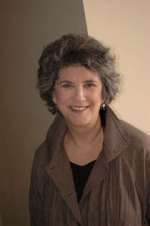 Victoria Zackheim is the author of the novel The Bone Weaver and editor of six anthologies: He Said What?: Women Write About Moments When Everything Changed; The Other Woman: Twenty-one Wives, Lovers, and Others Talk Openly About Sex, Deception, Love, and Betrayal; For Keeps: Women Tell the Truth About Their Bodies, Growing Older, and Acceptance; The Face in the Mirror: Writers Reflect on Their Dreams of Youth and the Reality of Age; Exit Laughing: How Humor Takes the Sting Out of Death; and the upcoming FAITH: Essays from Believers, Agnostics, and Atheists (Feb. 2015).
Victoria Zackheim is the author of the novel The Bone Weaver and editor of six anthologies: He Said What?: Women Write About Moments When Everything Changed; The Other Woman: Twenty-one Wives, Lovers, and Others Talk Openly About Sex, Deception, Love, and Betrayal; For Keeps: Women Tell the Truth About Their Bodies, Growing Older, and Acceptance; The Face in the Mirror: Writers Reflect on Their Dreams of Youth and the Reality of Age; Exit Laughing: How Humor Takes the Sting Out of Death; and the upcoming FAITH: Essays from Believers, Agnostics, and Atheists (Feb. 2015).
Her play, The Other Woman, based on her first anthology, will be featured in OneNight/OnePlay, and her play Entangled, an adaptation of the memoir Entangled: A Chronicle of Late Love, is in development at Z Space in San Francisco. Victoria’s first screenplay, MAIDSTONE, is now in development. She is story developer and writer of Where Birds Never Sang: The Story of Ravensbruck and Sachsenhausen Concentration Camps, aired nationwide on PBS. She teaches Personal Essay in the UCLA Extension Writers’ Program. Victoria was a 2010 San Francisco Library Laureate.
5 Questions on Writing
CHRIS JANE: You’ve written a novel (The Bone Weaver), essays, a documentary, a screenplay, and you’ve adapted two books into stage plays. Which form appeals to you the most as a writer?
VICTORIA ZACKHEIM: As much as I love the personal essay, I receive the greatest joy from film and theater. Perhaps it’s because I’m so visual, and I “see” the scenes unfold. As soon as the characters are positioned in the scene, the dialogue falls into place. With essay, I have to dig into my most personal emotions, whereas film and theater allow me to create fictional lives: back stories, experiences, emotions, dreams. And while I admit that those characters often mirror a part of me, that “distancing” allows me to explore without fear of self-exposure. (You notice I haven’t addressed the novel—that form terrifies me!)
What is the most common mistake beginning essay writers make?
The most difficult challenge is the ability to dig into our emotions. I tell my students that they can scratch the surface and get dirt under their fingernails, or they can take out the shovel and dig even deeper, or they can rent a two-ton excavator and really get at the truth.
The second challenge is to avoid shackling the reader with too much information. We don’t need to know exact dates, or the names of fifteen family members. If there are five siblings, and we need only that information, why tell us their names and ages? Even little things, like writing Boston, Massachusetts, when most readers know where Boston is. As for the content of the essay: there’s a format that always works, but few writers hold to it. When I teach my Personal Essay course in the UCLA Extension Writers’ Program, I always run into resistance, until that light goes on in the student’s head, when I make them focus only on the opening paragraph. It’s vital, and it should be short, clear, stating the purpose of the essay. Period. All specific information comes after. This opener has two primary purposes: (1) reveal the subject/theme of the essay, and (2) compel the reader to move on to paragraph two! Here’s an example of what doesn’t work and what does in the opening paragraph:
NO: On April 18, 1968, my parents sold our house at 1234 Tree Street in Akron, Ohio, and moved us to Topeka, Kansas. I was twelve, my brother Tom was sixteen, my twin sisters Martha and Molly were eight. None of us wanted to move, but my father’s company, BG Brown Forklifts, promoted him to Manager.
YES: When I was twelve, my father’s promotion meant we had to leave our home in Akron and move to Topeka. My three siblings shared my dread of leaving a place we loved, and trying to start a new life among strangers. While they made the adjustment quite well, I did not. In truth, I was affected so dramatically that it would be decades before I could recover from the damage and live a normal life.
What sets these two apart? The key to a good essay is conflict, and the story’s (and character’s) arc. People have to change during the story, whether fiction or non. What was learned? What was not? What was achieved/gained or not?
You said in an interview that you decided to take creative risks when you turned 60. Why did it take so long, and how did a fear of taking risks impact your earlier creative output?
I lacked the confidence to take risks when I was younger. I took them, certainly, but I inched into them, cautious and mindful of the pitfalls. At 60, I wasn’t braver, just older! And I realized that time was rushing by, and if I wanted to try new avenues, I’d better do it now. After that declaration (to myself and to workshop and event participants), the bravery arrived in stages. With every new risk came something wonderful, including the courage to “up” the risks. Now that I’m 70, I have all the courage and confidence required, so I need only create the projects. The biggest of my life and career will happen this year, and I’m more than ready for the challenge.
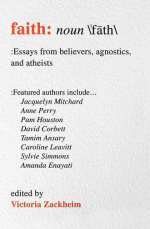 Subject matter tackled in the anthologies you’ve edited, in no particular order, includes adultery (The Other Woman), things men said to women—good or bad—that changed the nature the relationship (He Said What?), women’s attitudes toward their bodies (For Keeps), the exploration into the person our families expected us to be, and the adults we became (The Face in the Mirror), and the humorous side of dealing with the death of a loved one (Exit Laughing). Coming soon: essays about faith, or lack thereof (Faith). What inspired Faith, and what’s next?
Subject matter tackled in the anthologies you’ve edited, in no particular order, includes adultery (The Other Woman), things men said to women—good or bad—that changed the nature the relationship (He Said What?), women’s attitudes toward their bodies (For Keeps), the exploration into the person our families expected us to be, and the adults we became (The Face in the Mirror), and the humorous side of dealing with the death of a loved one (Exit Laughing). Coming soon: essays about faith, or lack thereof (Faith). What inspired Faith, and what’s next?
This voyage into the exploration of faith started (as do all my anthologies) with my own soul-searching. My mother was a “mean” atheist, believing that anyone who believed was a fool. I was well into my sixties before I began to seriously explore what I believed. (Not coincidentally, this happened the year after my mother’s death.) Why, when standing above the magnificent coast of Big Sur, did I feel emotionally overwhelmed by the beauty? What made me pull off a highway early in the morning to watch the sunrise, moved by the realization that I would never again see that sky with those colors? During a drive from Los Angeles to my home in San Francisco, the book came to mind, along with ideas for my own essay. By the time I pulled into my garage, I knew what this book would be—gifted authors answering the question What do I believe? Whether they were atheists, believers, or agnostics wasn’t important, as long as they explored their beliefs in the essay and shared that exploration with the reader. With this in mind, I immediately called my friend, mystery writer Anne Perry, a woman whose beliefs are deep and unshakeable, and with whom I’ve shared hundreds of hours of discussion on faith. “Do it!” she said. And I did.
What’s next? I do have an idea for another anthology, but I’ll keep it to myself for the time! I’m working on two plays, both in development, and awaiting word from my director about the screenplay. The money hunt is on, which drives me crazy! And one of the plays is part of a major project, which I can discuss in a few months.
You’ve said that you usually have expectations about what you’ll receive after putting out a call for essays, but that what you ultimately get is often surprising. For example, you thought you might read a stack of man-hating rants after your call for He Said What? essays, but what you received instead were insightful and touching pieces. What did you expect after soliciting submissions for Faith, and what actually arrived?
I have a friendship or a working relationship with nearly every author who wrote an essay for this book, and so I was quite sure about their beliefs and what they would write. On more than a few, I was so wrong that it still makes me laugh. Yes, I did expect some kind of anti-religion rant from Malachy McCourt (which he delivered!), and I certainly expected a beautifully written and heart-felt essay from Anne Perry (perfection), but Caroline Leavitt’s essay about tarot card and psychics caught me by surprise. She’s a dear friend and I should have expected something unique and compelling, but this was tantamount to discovering gold. Tamim Ansary delivered a thoughtful and thoroughly engaging essay about how an outing with his small daughter transformed him, while Sylvie Simmons wrote about her childhood love for, and fascination with, Jesus. Frank Dabba Smith, a rabbi in London, shifted gears in his essay. The first draft focused on Albert Einstein, and then he tossed it and took out that excavator, revealing to us his significant interfaith work toward peace in Israel, England, and Jordan. I could describe every essay in length—no two are in any way similar—but I’d rather your readers read the book!
5 Questions on Publishing
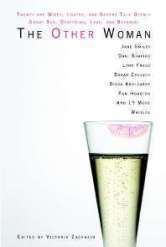 The Other Woman features contributions by such figures as Pulitzer Prize winner Jane Smiley and Canadian television personality Mary Jo Eustace, the former wife of Dean McDermott (who is now reality-famously married to Tori Spelling), among others. An appealing lineup for readers, but how do you select the writers for the anthologies? For Exit Laughing, for example, did you already know about a certain number of writers who had lost someone, or did you already like certain writers and, in a way, count on them having experienced the death of a loved one? And do you have to be careful with wording, particularly when the subject is as sensitive as other women?
The Other Woman features contributions by such figures as Pulitzer Prize winner Jane Smiley and Canadian television personality Mary Jo Eustace, the former wife of Dean McDermott (who is now reality-famously married to Tori Spelling), among others. An appealing lineup for readers, but how do you select the writers for the anthologies? For Exit Laughing, for example, did you already know about a certain number of writers who had lost someone, or did you already like certain writers and, in a way, count on them having experienced the death of a loved one? And do you have to be careful with wording, particularly when the subject is as sensitive as other women?
I rarely consider the authors’ backgrounds or experiences when inviting them into the project. Authors are chosen based on their writing. Is it engaging, revealing, and are they willing to dig into their collection of truths and experiences and share these with readers? For Exit Laughing, I merely put forth the idea of how we use humor to soften the blow of death. I was more cautious with The Other Woman, but only because it was my first anthology. After I invited my dream list of authors (and nearly all of them accepted), and edited the book, I approached the following anthologies with far greater confidence.
Whether the number of Amazon reviews a book has is indicative of the size of its audience is hard to say, but you can at the very least assume the book with more reviews is the book that compelled more people to write about it. Were you surprised to see that The Other Woman has the most reviews, and have you ever been tempted as a result to choose a theme you know is sensational (even if important and personal to the people writing it and reading about it) simply because it will probably sell?
I wish I could do that, choose a subject because I KNOW it will sell! Many of the top sellers are based on sexual experiences, or traumas survived. For me, my anthologies are about exploring our emotions, healing our wounds, working out those elements in our lives—physical and emotional health, relationships, fulfilling dreams—that act as obstacles. The fact that writers often approach these difficult realities with humor only adds to the joy of the project. (Case in point: Carrie Kabak and Christine O’Hagan.)
You write in your essay “No Guts, No Glory” that your first public reading of The Bone Weaver—a reading that set you up to fantasize about fame and glory—attracted 120 people. This even though your publisher didn’t have the resources to do publicity or marketing, leaving everything to you. How did you do it?
I was naive enough not to know better! The book was semi-self-published, so I had enough of a financial stake to want to recoup my expenses, and at the same time put my work out there. I started by getting myself invited to book fairs around the country. And yes, I paid all travel expenses, so I designed a plan. When I knew I’d be reading in Boca Raton, for example, I opened a map of Florida and drew a circle around Boca, and then called all the independent bookstores within a 200-mile radius. By the time I arrived for the book fair, I had a half-dozen readings organized.
That first year, I think I did around ten book fairs and perhaps twenty bookstores. I felt like a traveling salesperson, boxes of books sliding around in the trunk of my rental car. But I finally sold around 2,000 books, so I recouped a good part of my expenses. When a book fair called and offered to pay all my travel expenses, I practically wept with joy! But most important was that those bookstores became supporters, and I could go back to them several years later and pitch another event around a new book.
Building relationships is vital, and I’m deeply grateful to the indies who continue to support my work. And while there’s a big move against the chain stores, I have to add that Barnes & Noble has been a major friend of my events. They’ve been supportive, shared my excitement, and have gone that extra mile to accommodate my authors and me. With the Faith book about to be launched, I’m working closely with my publisher, Beyond Words, to organize events. At the moment, there are fifteen on my calendar, and I’m sure that this number will double over the coming weeks, especially as religious groups see the interfaith messages that run through the book.
Your book tours were paid for out-of-pocket, and you traveled quite a bit. Did the appearances end up leading to increased sales? (In other words, would you recommend that someone who is largely unknown set up signings and readings at personal cost?)
That’s a tough question, and so much depends on the financial situation of the writer. Imagine flying from Los Angeles to NY for three readings, and these readings result in the sales of 100 books. When you calculate what the writer earns from those sales, the sum doesn’t cover airport parking, much less plane, hotel, train/taxi, and meals. I strongly recommend signings within driving distance of home, even if it’s hundreds of miles. Perhaps a guest room or couch is offered, so hotels won’t be necessary.
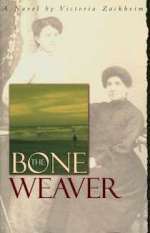 It took you 16 years between first page and completion to finish The Bone Weaver. How long did it take you to find a publisher, and did you experience any setbacks that taught you something about the process — or about yourself?
It took you 16 years between first page and completion to finish The Bone Weaver. How long did it take you to find a publisher, and did you experience any setbacks that taught you something about the process — or about yourself?
I started the novel while living in Northern California, worked on it during my five years in Paris, and then continued after my return … sixteen years from start to finish, and then another few years to get it published.
Nothing is more humbling than to realize that editors aren’t falling over themselves to buy your book. When I saw that The Bone Weaver wasn’t going to find a publisher, I took the advice of Aviva Layton, a gifted freelance editor (who later became a dear friend) and approached Elton-Wolf, a small publisher in Seattle. They offered a contract where I paid for part of the expenses and they provided full marketing and PR support. In those days, the term “self-published” was a death knell, but I wanted that novel to be published and I swallowed my very large and irrational pride.
I have to add something here, a thank-you to literary agent Sandra Dijkstra. While I struggled through The Bone Weaver, Sandy read perhaps five revisions. She ended up not representing me (until my first anthology!), but it was her encouragement, and those pages and pages of notes and suggestions over several years, that kept me going. Had I not completed the novel and published it, I’m quite sure I never would have entered the world of anthologies, film, or theater.
And yes, there were many setbacks: loss of faith in myself, feeling like a hack, wondering if I should walk away from that dream and focus on being an editor. And the little disasters, such as flying to Florida for a luncheon designed around the novel and forgetting to bring books to the 100 women who had paid to attend. (I told the women that the books were free, but the mailing would cost them $18, and sold sixty books!) Every error or lack of confidence became a learning experience, and a reminder that I’m human, fallible, and able to make exciting things happen. After so many years at this, I’m quite fearless.
Writers dream of being published, and the chances of that happening today are far greater than when I published my novel in 2001. Does that surprise you? With the Internet now touching every part of our world, there are exciting and meaningful magazines, newspapers, blogs, all hungry to find articles, essays, stories, novels by new writers, imaginative writers willing to take the risk and put life and work and heart out there for the very hungry reading public.
Thank you, Victoria.
Read more in the 5 On interview series.
The post 5 On: Victoria Zackheim appeared first on Jane Friedman and was written by Chris Jane.
January 19, 2015
10 Resolutions for a Saner Internet—and Life

For me, the hardest thing about being online is remaining focused on creative endeavors important to me. The multiplicity of voices—and the community that you care about—can make you forget your center. You get sucked into other agendas that could be worthy, but are never what you intended to get mixed up in. Sometimes, it’s hard not to play. You love the networks you’re a part of. You want to connect and contribute. You want to pay it forward.
But then it becomes hard to extricate yourself. You react and sometimes let it dictate your schedule. More and more often, you look up and realize that nothing you’ve been doing for the past few hours (or days or weeks!) much related to the underlying purpose you have for your own creative work.
There is so much to do, so much to participate in, so much to respond to—so many opportunities. It is a double-edged sword. Who doesn’t want more opportunities? But when the online community starts writing your to-do list, what happens to your own vision?
I’m not necessarily better at dealing with this than anyone else. I have periods of discipline, and then I don’t. I often gain back my discipline when I have moments away—to allow my own perspective to return. Some of the things I try to do:
Focus on reading or creative work first thing in the morning, for 3-6 hour stretches.
Stay off email for 8-12 hour periods—sometimes 24 hours.
Stay offline after dinner.
Sometimes I feel guilty about these things. What if students, colleagues, or clients need a response quickly? Is it OK to disappear for a full business day? I try to tell myself: Yes. And to also set others’ expectations so I don’t feel guilty.
All of this is a long prelude to 10 resolutions put forth by L.L. Barkat at Tweetspeak Poetry, as part of a movement called “Citizens for a Saner Internet—and Life.” Consider me one such citizen; want to join me?
10 Resolutions from Citizens for a Saner Internet—and Life
Consider sharing three beautiful posts for every negative post we feel we must share.
Share angry posts only if they significantly contribute to an important conversation.
Understand anger as important, a red flag type emotion, that loses its strength if all we ever do is feel angry.
Write headlines that are intelligent, witty, or intriguing without exhausting our readers by frequently playing the “outrage card” to get click-throughs.
If we feel we want to listen to an angry Internet conversation for what it may be able to teach us about a subject, we resolve to do so silently for a “waiting period,” in a stance of learning rather than one of defense and counterattack.
We will not link to attack journalism from our websites, so as not to give more power to the writer or website of said journalism. Related, we will not link to or re-share iterative journalism, which is a sloppy form of journalism designed to deliver a “scoop” that may have no foundation yet in truth.
Consider ways to move beyond the “page view model” of Internet sustainability (which is one reason attack or sensationalist journalism is often pursued by individuals and websites, because it can result in high page views, which can translate into staying financially sustainable).
Get offline for periods of rest—optimally, one offline day a week and getting offline by a certain cutoff time in the evenings—and use this time to cultivate face-to-face relationships, read, exercise, or otherwise interact with the world around us.
If we are unsure about our own angry or sensationalistic post on a subject, we will first pass the post by trusted friends who come from different viewpoints, in a more private setting, before deciding whether to hit the publish button.
If we have been online for hours and are finally simply “surfing” because we feel lonely or unfocused, we will get offline and spend time with people face-to-face, read, exercise, play, or delve deeply into a new interest area—one that will seriously challenge us and open up new avenues for our learning and our lives.
Sometimes, anger isn’t as much the issue (for me) as feeling buffeted by the concerns, egos, and ambitions that can be baked into social media interaction—where our moods and attitudes can be influenced who’s following, liking, responding, or connecting … or by who’s getting recognition or not … or by who’s agreeing or participating or not. Getting stuck in that thought pattern is a sure sign you’ve lost focus and probably control over what you’re trying to accomplish.
All that aside: I tend to have a bigger problem dealing with email distractions than social media distractions. Social media is easy to compartmentalize when needed; I’m still working on that with email.
As Laura says at her original post, feel free to take the 10 resolutions above and publish them on your blog. The resolutions are a community thing, and they belong to you if you want them to.
For more thoughtful reading on this topic:
Baratunde Thurston Left the Internet for 25 Days, and You Should, Too by Baratunde Thurston
I’m Still Here: Back Online After a Year Without the Internet by Paul Miller
Stop Talking. Start Doing. by Jonathan Fields
The post 10 Resolutions for a Saner Internet—and Life appeared first on Jane Friedman and was written by Jane Friedman.
January 16, 2015
How E-Books Have Changed the Print Marketplace: Digital Book World, Day 3
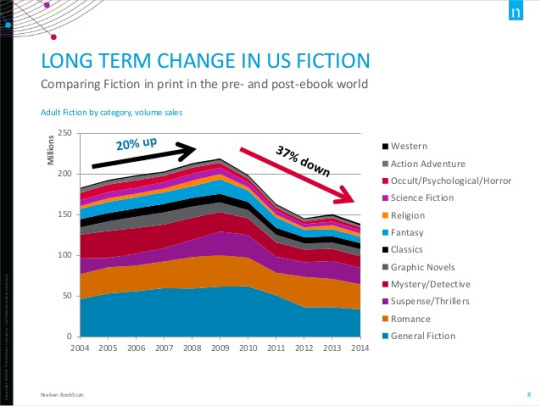
On the final day of Digital Book World, one of the most tweetable sessions (aside from the Godin talk) was the Nielsen presentation on long-term changes in the print and ebook market by Jonathan Nowell.
Key stats include:
Overall U.S. print book sales in 2014: 37% juvenile, 23% adult fiction, and 40% adult nonfiction. If you read the day 1 recap, then you know that 80% of YA purchases are by adult readers, for adult readers. I had a conversation with a librarian, who said part of the appeal for adults is that YA is fast-paced and quick to read—you can finish a book in a day. (Your thoughts? Please comment!)
In the latest quarter, adult fiction accounts for 65% of ebook sales.
Fiction print book sales: They were up 20% from 2004–2009, and have decreased 37% since then (as a result of ebooks picking up momentum).
Fiction ebook sales: Romance started off as the strongest genre in ebook format, and has remained dominant since. Today it constitutes 24% of all ebook sales.
Do ebook fiction sales cannibalize print fiction sales? No. From 2008–2010, three mainstay fiction authors sold 27 million print units collectively. From 2010–2012, they sold 23 million print units PLUS 28 million ebook units.
Nonfiction print book sales: They were up 18% from 2004–2009, and have decreased 23% since then. The hardest hit categories: travel (-50%) and reference (-37%). The flourishing categories: religion/bibles (+43%), cooking/entertaining (+11%), the latter specifically driven by celebrities.
The juvenile category (which includes YA) had its best sales year ever in 2014. Sales are up 12% from the prior year.
The slide pack from Nielsen is full of fascinating data—go take a look.
Seth Godin’s Advice to Publishers
Marketing guru Seth Godin has a background in publishing, and occasionally runs publishing experiments. He was invited to give a brief keynote talk at Digital Book World, followed by a discussion with Michael Cader of Publishers Lunch. Here are some of my favorite points.
On the importance of knowing your readership: Godin says one of the fundamental questions is: Who is your customer? “The obvious answer is the reader,” he says, “But if I walk down the street to any publishing house, and ask for people who answer phone calls from readers, or people who track readers” … you won’t find anyone. “But if I ask, ‘Show me the sales force,’ those are people selling to bookstores. Book publishing sells stuff that bookstores want to buy and measures success based on shelf space to be in front of people who pay money. When digital showed up, [the question became] how do we get Amazon, Apple to be our customer? Not: Oh, there’s a different game to be played here.”
Until you can answer the question about who your customer is—know who they are and what they want to buy—Godin says, “You’re going to be playing a different game than people who have been winning on the internet for a very long time.”
On thinking beyond the book: “If you say what I do for a living is find information and give it to people who need it, that can take a lot of different forms. There’s a huge range of things you could be doing” aside from creating and publishing a book, regardless of its format.
On the possible need for even bigger scale publishers to compete against Amazon: “Why did we need general trade publishers? It’s an efficient way to make bookstores happy. Bookstores didn’t want 100,000 publishers but 12. They have time to meet with 12 sales reps. Why is it more efficient to be at that scale?”
On Amazon: Godin says the underreported insight about Amazon is that they are culturally and algorithmically very good at selling everything, but they’re not particularly good at selling anything. For publishers, “The challenge is relationships with millions of people—that’s the scale we need, that’s the future of publishing. If readers want to hear from you, you’re going to do fine.”
On using digital media to reach readers: “A person telling a person telling a person [about a book] is the holy grail of publishing. The internet allows you amplify that, but only if you know who the reader is.” Godin says that, at this stage of his career, “I don’t grow the audience any more, the audience grows the audience.”
On whether authors should be using social media: “The challenge we have is not all of your authors want to be good at social media. And not all of them have something to say when they’re not writing a book. Is the only way to sell books to dance faster than everyone else? I don’t think it is. … What we have to figure out is not merely does this author have 70,000 good words to say in a row, but do they have a following, can we help them get a following, are they the kind of person where a reader says, ‘I can’t wait for your next work.’ The long tail punishes people who are merely interesting to many. It rewards people who there is passion from a few. That’s the sort of thing that when we publish it people embrace it and talk about it.”
On ebook subscription services: “Every time people pay money for anything, they’re telling themselves a story. You can’t argue someone into [something]. The challenge isn’t ‘Will this hurt our unit economics?’ But what story do we tell people when they choose to subscribe? … People who will buy because it’s cheaper aren’t going to buy. The story will make it work. The ability to say this is special, not cheap, is a reason why people will cross the street to do it.”
The post How E-Books Have Changed the Print Marketplace: Digital Book World, Day 3 appeared first on Jane Friedman and was written by Jane Friedman.
January 15, 2015
Amazon Discusses Kindle Unlimited & Kindle Select Participation: Digital Book World, Day 2

If you’ve been watching publishing news over the last 24 hours, then you may have seen a flurry of articles summarizing the Digital Book World session featuring a conversation with Russ Grandinetti of Amazon.
These were some of the most memorable takeaways for me:
In describing (with complete sincerity and seriousness) the indie author community: “They’re awesome. It’s an incredibly vibrant community. They like caps locks sometimes—we view that as a feature not a bug. … [Authors are] among the biggest sources of input in how we build and evolve.”
Regarding Kindle Unlimited, Amazon’s ebook subscription service: He was reserved on the matter, and said that Amazon didn’t have any particularly strong “answers” or insights about ebook subscription services, or their long-term effect on “a la carte sales” since it just launched in August 2014. However, he said that if you look at a customer’s buying patterns 60 days before KU and 60 days after, these customers are spending more money on books after enrolling—25% more on average.
Regarding digital subscription services in general: He emphasized that in every single digital media category, subscriptions are playing an important role—you can’t find that it doesn’t succeed at some level. (Think: Netflix, Spotify, etc.) “Books will not be immune to this.” He mused, “How can it grow the business and be incremental?” He also added, “A la carte sales of books is so healthy in digital,” but that it’s not the case for other media, such as music. However, of course, it’s early—it’s only 6 months in. One thing Amazon measures: Can they get people to read more? They watch how often people read, how many times per week, and the amount of time they spend reading. He noted that subscription will be a choice that a publisher considers at some point in a book’s lifecycle. It might start a la carte then go to subscription, or maybe the first in a series goes to subscription. Publishers will have to make the same kind of strategic business decisions that are made for movies and TV.
Related to indie authors’ reports of dwindling sales as a result of Kindle Unlimited (KU)—and therefore abandoning KDP Select: He emphasized KDP Select is a very short term of exclusivity (3 months). “We look every month at the titles that come up for renewal.” He shared some stats I had not heard: Authors enrolled in KDP Select renew in excess of 95%. Also, the total number of titles enrolled in KDP Select has grown by 35% since KU launched. He said that a la carte book sales through KDP Select are growing faster than titles not in Select, and that if you add in the money that authors earn from KU/KOLL, earnings over the August 2014–December 2014 period are more than double what they were during the same period in 2013.
On Amazon Publishing: He said they are focused on happy authors, and it’s a primary way they judge success. They “rigorously survey” their authors and ask how they’re doing. (When I tweeted this, Victoria Strauss of Writer Beware questioned it, since she’s been an Amazon author for a while now, but has never been asked for feedback.)
You can find good recaps of the discussion here:
Amazon Exec: Here’s Why It Pays to Make Your Ebooks Exclusive to Us (GigaOm)
Amazon’s Grandinetti Talks Subscription, Innovation (The Bookseller)
An edited transcript is available at Publishing Perspectives
More on Ebook Subscription Services
Later in the day, an entire panel was devoted to ebook subscription services, focusing more on what’s happening with Scribd and Oyster, who debuted their services before Amazon’s. Both Scribd and Oyster carry Big Five publisher titles, unlike Amazon’s Kindle Unlimited. Some interesting stats were shared.
According to Nielsen, people who use ebook subscription services are buying adult nonfiction and kids’ books. It’s a very small percentage of the market, though: 10% (and only 4% if you exclude Amazon).
Subscribers spend more on books than non-subscribers (meaning they still buy books, more books than others). Perhaps cannibalization concerns will wane.
Romance, new adult and some deep backlist have done well in subscription for Simon & Schuster. Their Scribd business tends to be more genre fiction, while Oyster tends to be nonfiction.
The long tail shines on Oyster; more sales come from backlist. 80% of books read are based on recommendations/discovery within the system, not search. However, keep in mind that these services don’t typically get access to current bestsellers or new titles—there’s usually a one-year delay (and that’s still a very broad generalization).
Subscription sales can represent a very high percentage of an ebook’s sales—in some instances, 35%-75% of ebook sales.
Guy Gonzalez commented on Twitter, aptly, that the panel hit well on discoverability, but there wasn’t a single mention of libraries, or any discussion of revenues.
The post Amazon Discusses Kindle Unlimited & Kindle Select Participation: Digital Book World, Day 2 appeared first on Jane Friedman and was written by Jane Friedman.
January 14, 2015
5 On: Leora Skolkin-Smith
Note from Jane: Today, I’m pleased to announce the series 5 On by author Chris Jane. 5 On asks established, traditionally published authors and experienced self-published authors five questions about writing and five questions about their experiences with the publishing industry. The series is designed to educate and encourage newer writers looking for guidance and, frankly, hope. For some, it may also provide a much-needed reality check.
About Chris Jane (@chrismjane): She recently self-published the novel The Year of Dan Palace (Nov. 22) and is a former adjunct English professor. She is also the author of the novel Pretty Much True, which has been featured on NPR and NBC. She recently left her full time feature-writing job at the Journal Inquirer (in Connecticut) to be a full-time novelist.
In this installment of 5 On, author Leora Skolkin-Smith discusses the pain (and hidden value) of rejection, the time she simply could not agree with her editor, her strong feelings about traditional publishers, and more.
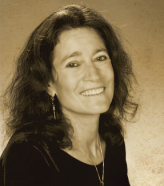 Leora Skolkin-Smith was born in Manhattan in 1952 and spent her childhood between Pound Ridge, NY, and Israel, traveling with her family to her mother’s birthplace in Jerusalem every three years. She earned her BA and MFA and was awarded a teaching fellowship for graduate work, all at Sarah Lawrence College. Her novels, Hystera, Edges, and The Fragile Mistress, were selected by Princeton University for their series The Fertile Crescent Moon: women writers writing about their past in the Middle East. Hystera was the winner of the 2012 USA Book Award and the 2012 Global E-books Award. Hystera was also a finalist in The International Book Awards and a finalist in the National Indie Excellence Awards. She is currently a contributing editor at readysteadybook.com, and her critical essays have been published in The Washington Post, The National Book Critic’s Circle’s Critical Mass, and other places.
Leora Skolkin-Smith was born in Manhattan in 1952 and spent her childhood between Pound Ridge, NY, and Israel, traveling with her family to her mother’s birthplace in Jerusalem every three years. She earned her BA and MFA and was awarded a teaching fellowship for graduate work, all at Sarah Lawrence College. Her novels, Hystera, Edges, and The Fragile Mistress, were selected by Princeton University for their series The Fertile Crescent Moon: women writers writing about their past in the Middle East. Hystera was the winner of the 2012 USA Book Award and the 2012 Global E-books Award. Hystera was also a finalist in The International Book Awards and a finalist in the National Indie Excellence Awards. She is currently a contributing editor at readysteadybook.com, and her critical essays have been published in The Washington Post, The National Book Critic’s Circle’s Critical Mass, and other places.
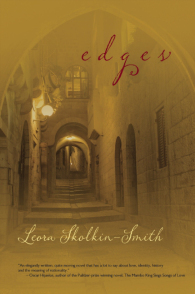 CHRIS JANE: Grace Paley (1922-2007), one of your instructors at Sarah Lawrence College and also Vermont’s Poet Laureate for four years, published your first novel,
Edges
, under her own imprint. She also nominated you for a PEN/Faulkner Award and PEN/Earnest Hemingway Award. How critical to your decision to make a serious life of writing was that kind of support and encouragement?
CHRIS JANE: Grace Paley (1922-2007), one of your instructors at Sarah Lawrence College and also Vermont’s Poet Laureate for four years, published your first novel,
Edges
, under her own imprint. She also nominated you for a PEN/Faulkner Award and PEN/Earnest Hemingway Award. How critical to your decision to make a serious life of writing was that kind of support and encouragement?
LEORA SKOLKIN-SMITH: Oh, it was essential. I do not believe I would have ever taken myself seriously without her first taking me seriously. That she received my manuscript in her third stage of cancer and went down to the printer to publish it herself…well, I’d better take it seriously!
Which author’s writing taught you the most about how you wanted to write? Was there a particular novel or book?
Yes, three authors come to mind. Of course Grace Paley, but also Elfrieda Jelinek and Violette LeDuc. I was also influenced by Clarice Lispector. We are flooded with novels that represent the external motions of people, but it’s the interior life I wish to represent, and to write from a personal center that is authentic. Jelinek received the Nobel Prize, but it’s still hard to find her work in a bookstore! That borders on being tragic for me. Jelinek, LeDuc, and Lispector were brave pioneers. If I taught at college I would have a course on their work alone. It’s a goldmine that those in publishing, and even many published writers, step on and overlook. Memoir is not the same as translating your subjective experience into searing poetry and prose.
You write in a recent blog post at the website of your publisher, The Story Plant, that your upcoming novel, Stealing Faith , “is the story of how a young person was embraced and mentored by a famous writer, and how she is yearning to understand what exactly that relationship was all about, and will it stick after the death of her protective guardian?” What inspired this story?
Definitely my relationship with Grace Paley. I also studied with Susan Sontag, another voice rarely heard today. Grace gave me everything, no two ways about it. We spoke on the phone three times a week. She was all for the “truth.” And that tricky word and meant a lot.
You write in the same post, “The hope that this next book will be better, coupled with the despair that it possibly won’t be and will possibly instead lead to heartbreak…” What would have to happen for a book to lead to heartbreak? (If this means the book would be rejected by publishers: How can you, or any writer, tell the difference between “good, but publishers have their own reasons for not taking it on,” and “publishers aren’t taking this because it simply isn’t good enough, and I know it isn’t good enough”?)
To tell you the truth, for the very simple reason that traditional publishers make me want to jump out a window, I meant really what my own estimation of the work would be. I can’t provide publishers with a bestseller; I know I’m a different kind of writer, one who doesn’t necessarily appreciate their “A-list.” But I’m severely critical of my own work. It has to stand up to the sometimes unbearable standards I place on it.
How does a failed work, whatever the reason for the failure, affect your approach to the next project?
I love Faulkner’s phrase. When he wrote The Sound and the Fury, he said it was a “magnificent failure.” What is failure? That it sells only a few copies and doesn’t get review coverage? For me, it’s my job to decide what fails and what doesn’t, not some self-appointed outsider’s. Was it “true” and authentic? Those are my standards. I have a rebellious spirit, and I can’t stand what publishing has become, for the most part. My questions about worth will always be internal, within myself. That’s Grace Paley training!
Your plan was to complete Stealing Faith in January. Are you on schedule, and how do you respond creatively to deadlines? Do they inspire or stifle your writing?
Deadlines definitely stifle my work. But they help me set limits on how astray I can get and keep me from rambling on into eternity.
How much promotional work are you solely responsible for?
Not much. I hired a publicist and my wonderful publisher does so much.
What has been most successful for you when it comes to getting attention for your books?
Actually, readers are the most helpful. Facebook has helped, but getting it into the hands of real readers is the magic that pushes the sale.
If you passionately disagreed with an editor’s suggested changes to your novel, but the novel’s publication was contingent upon those changes being made, how would you handle the situation?
I did handle it years ago. At 25, I was optioned by Karen Braziller at Persea Books. Straight out of grad school. She wanted the standard story, needing it to be entertaining, of course, of mental illness. I gave her my mess. We parted despite a contract because I wouldn’t submit to her editorial advice. Again, Grace Paley training!
What is your most painful rejection story, and what did it teach you?
I really admired Elisabeth Sifton, a distinguished editor at Farrar, Straus and Giroux. She always commented on my work, and she almost took my first book but criticized it for not having enough of a narrative drive. Since I respected her so much, her rejection was very, very painful, but it helped me to focus on creating a narrative not just for that novel, but for all others. That is, I went back to brass tacks and tried to learn what narrative drive was. I discovered that was my weak point. She also always responded warmly to my work, which kept my confidence up for years.
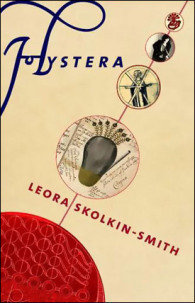 Have you ever experienced challenges as a female publishing novels about things like war (Edges) and mental issues (Hystera)?
Have you ever experienced challenges as a female publishing novels about things like war (Edges) and mental issues (Hystera)?
Oh, absolutely, yes, yes. The inner life of a female is treated as a virus. A lot of that is the oversimplification current women’s prose offers, and people grow used to that and don’t ask for a deeper look. But I think, as always and historically, the female psyche is frightening for those not willing to take that voyage with you. But yes, yes. Men can write deeply sexual books, but when a woman does the same, it doesn’t feel to me she is given that respect. We are scary.
Thank you, Leora.
The post 5 On: Leora Skolkin-Smith appeared first on Jane Friedman and was written by Chris Jane.
The Status of the Children’s Book Market: Digital Book World, Day 1

I’m speaking at Digital Book World (DBW) this year, and even though I missed the first day events, I followed closely on Twitter. One of the big themes on Tuesday was the children’s market, with a full day of sessions presented by Publishers Launch in partnership with DBW.
Jonathan Nowell from Nielsen presented some fascinating charts and trends in a morning session. This one was my favorite.

Other takeaways from Nowell’s presentation:
Print juvenile books experienced 12.8% unit sales growth from 2013 to 2014.
Juvenile bestsellers are taking up a bigger percentage of the overall bestseller list—its growth is driving the industry.
Children are starting to read e-books at a younger age, and the e-book format is growing as a percentage share of all books purchased. (It increased to 21% in 2014, up from 14% in 2013.)
80% of YA books are bought by adults for themselves.
Nowell concluded by saying the greatest challenge is expressed by the chart above.
For more:
View Nowell’s presentation at Slideshare.
Take a look at all the slide packs from presentations at the Publishers Launch event.
The post The Status of the Children’s Book Market: Digital Book World, Day 1 appeared first on Jane Friedman and was written by Jane Friedman.
January 9, 2015
How to Avoid Misery Over Rejection
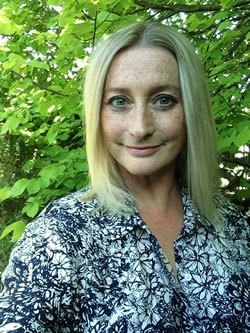
In a very honest essay about persevering as fiction writer (and having the faith to try it in the first place), Eva Lomski discusses how she manages the submissions and rejection process:
The best way I found to avoid misery over rejection was to ensure I had as many stories on submission as possible, so that when the inevitable email arrived, my emotional investment was left relatively unscathed. Every so often, I went through the spreadsheet, counted my “successes” and calculated my hit rate. It remained stable.
Click here to read Eva’s entire essay, in the latest Glimmer Train bulletin.
Read more essays on the writing life at Glimmer Train’s site:
Some Things I Didn’t Realize About Myself Before I Wrote Them Down by Stefani Nellen
Write Locally by William Luvaas
The post How to Avoid Misery Over Rejection appeared first on Jane Friedman and was written by Jane Friedman.
January 5, 2015
Platform Building for Authors [30-Minute Video Interview]
Last week, I was a guest on The Author Hangout, a video interview series and podcast with the folks at Book Marketing Tools.
We discuss a wide range of issues, including author platform, blogging, and self-publishing. Here’s a brief snippet about my thoughts on platform:
It’s what I consider the long game. It’s trying to build a readership that’s going to be with you for not just one book, but for every book that you write—or for every story that you tell or every product or service that you develop. So platform goes beyond a single marketing campaign; it’s about developing your audience. For that reason, it tends to be very organic. It’s not like a one-time event. It’s something that you’re going to put a little bit of effort into on a daily, weekly, or monthly basis. And certainly there will be campaigns within that, tied to very specific books. Platform building is – I like the term audience development, which comes more from the nonprofit world, about thinking about how one reader’s value extends over a very long period of time.
Click here to watch or listen to the 30-minute interview, or read the full transcript.
The post Platform Building for Authors [30-Minute Video Interview] appeared first on Jane Friedman and was written by Jane Friedman.
December 29, 2014
Building Your Business As An Author [Interview]
Last week, I was delighted to be a guest on Stephen Campbell’s podcast, The Author Biz.
Some of the topics we cover in our 50-minute chat:
Why I usually discourage authors from blogging
My perspective on on building author platform
Whether it’s important to build a Facebook following before you publish your first book (in short, no)
Why building a direct connection with your readers is an investment in your future sales and career growth
The challenge of measuring sales and marketing results with social media
Click here to listen to the show.
The post Building Your Business As An Author [Interview] appeared first on Jane Friedman and was written by Jane Friedman.
Jane Friedman
- Jane Friedman's profile
- 1882 followers





